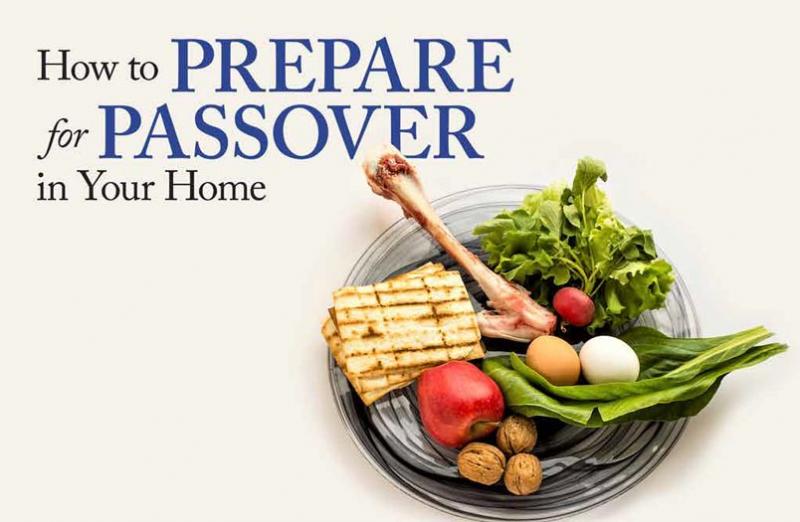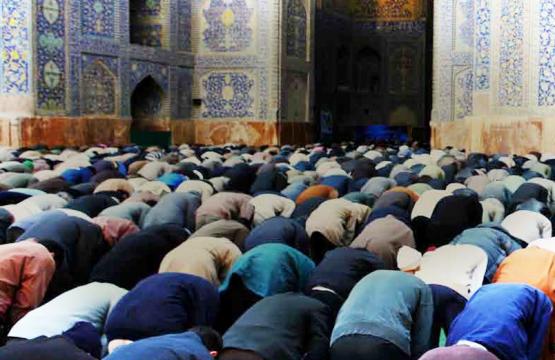
Of all the festivals listed in the Bible, many would say that Passover stands out as the most informative. It is certainly the most detailed in its description and traditional observance. We naturally think of the amazing details revolving around the Passover Seder meal. While this is certainly a highlight of the Jewish year, there are some other intriguing customs involved as we prepare for Passover within our homes even before the Seder dinner.
One of the central tenets of Passover is the removal of leaven from all our dwelling places:
“For seven days you are to eat matzot, but on the first day you must remove chametz/leaven from your houses” (Exodus 12:15). Traditional Jews start this process (biur chametz) with a thorough cleaning of the house. This would include the customary spring cleaning (yes, God invented it!) but with a vital additional step. All chametz must be removed, which would include any products containing yeast such as cereals and many processed foods, as well as breads. Leaven products can be given away or stored in a secured area like a closet and even symbolically “sold” to someone else. While there are technicalities in Jewish law about this process, the main thing for Believers in Yeshua is to appreciate the spirit of the tradition. Leaven is a common symbol for sin in the Scriptures and Jewish tradition. It is an apt representation since sin, like yeast products, permeates and even corrupts where it is found. Passover is more than a holiday of cleaning out our homes. It is a reminder to remove those things that are hurtful to our spiritual lives.
The next step of Passover preparation likewise illustrates great spiritual lessons for us. After the home has been completely cleansed and the leaven removed, there is an amazing tradition called the search for leaven (bedikat chametz). This may sound puzzling since the house was already cleaned, but this tradition focuses on further details of the cleansing. On the night before the start of Passover, small portions or crumbs of leaven are hidden in various locations throughout the home. It should be placed in rather obvious places where the chametz can be easily found. To facilitate the search for the leaven, four eclectic items are needed: a candle, a wooden spoon, a feather, and a paper bag. As the candle is lit, it is held by the person leading the search, perhaps a parent. At this point, any kids in the home can actively participate as the group walks room to room in search of the last remnants of leaven. When one piece is discovered by the candlelight, then it is scooped up onto the wooden spoon with the help of the feather. The chametz is then placed in the paper bag and the search continues until every last piece of leaven is found and likewise stored in the bag. The following blessing is said:
“Blessed are You, Lord our God, Ruler of the universe, who has sanctified us by His commandments and commanded us to remove the leaven.”
The leaven in the bag is kept overnight and then burnt outside the next morning (before the first night of Passover) to assure its complete destruction. It is also important to point out that it is not enough to just remove the leaven. One is also required to replace it with matzah/unleavened products for the full eight days of the Passover holiday. Evidently, it is not sufficient to merely remove the evil, but we must proactively have a pure walk in our spiritual journey with God.
A Messianic Midrash
Bedikat Chametz/the search for leaven is no doubt a fun and captivating tradition for the whole family. Yet, once again we should take a deeper look for the spiritual lessons behind this Jewish custom. As the final search for leaven (sin) commences, a lighted candle is mandatory. Is it not the light of God’s Word that exposes the spiritual leaven in our lives (Psalm 119:11)? As sin and hurtful actions are exposed by the light, so, too, they are collected and dealt with according to the feather and spoon. If we allow for some “Messianic midrash” teaching, the wooden spoon can be reminiscent of the wooden tool used for sin’s destruction; namely, the wooden cross of Messiah’s death (I Peter 2:24). The feather reminds Believers in Yeshua that it is also by the unique work of the Holy Spirit (dove) that we connect to Yeshua as our Redeemer. His ultimate work, as accomplished at Passover, is the destruction of our sins and the hurtful consequences of our rebellion. We get a fresh realization of this truth as the bag of chametz is burnt before the first Seder meal. We should also note the important chronology here. Before we celebrate the Seder meal (which highlights the remembrance of Yeshua with the third Cup and Afikoman matzah), we must search out our lives and be cleansed of any chametz. Our connection with Messiah (breaking bread with Him) requires that we first take an honest look into our own lives and let God take away our sin. So even before we celebrate the Seder, we learn essential lessons as we prepare our homes. Not surprisingly, all Believers in Yeshua are encouraged to incorporate some of these rich customs in our holiday celebration. As Rabbi Sha’ul states:
“Get rid of the old chametz, so you may be a new batch, just as you are unleavened – for Messiah, our Passover Lamb, has been sacrificed. Therefore, let us celebrate the feast not with old chametz of malice and wickedness, but with unleavened bread – the matzah of sincerity and truth” (I Corinthians 5:7-8).






